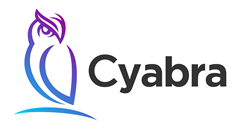Cyabra Unveils Cutting-Edge Deepfake Detection Tool to Combat Disinformation
In a world increasingly grappling with the pervasive threat of disinformation, Cyabra, a leading AI-powered disinformation detection platform, has launched a groundbreaking deepfake detection tool. This advanced technology empowers brands and governments to identify and counter the spread of AI-generated synthetic media, bolstering their defenses against malicious actors seeking to manipulate public opinion and erode trust.
The rise of deepfakes, hyper-realistic fabricated videos and images, has created a critical need for effective detection mechanisms. These sophisticated forgeries can spread disinformation with alarming speed, posing significant risks to brand reputations, public safety, and even political stability. Cyabra’s new tool directly addresses this challenge by providing rapid verification of content authenticity, enabling organizations to distinguish genuine content from convincing fakes.
The tool utilizes two proprietary AI models: PixelProof for images and MotionProof for videos. PixelProof employs spatio-frequency analysis to identify subtle pixel inconsistencies indicative of manipulation. MotionProof, on the other hand, detects unnatural movement patterns and lip-sync errors across video frames. Both models deliver results in seconds, providing confidence scores and visual heatmaps pinpointing areas of suspected manipulation. This allows users to quickly assess the veracity of content and understand the basis for the tool’s assessment.
The importance of deepfake detection has been underscored by recent incidents of fabricated videos featuring public figures going viral. From depictions of U.S. President Donald Trump being arrested to Ukrainian President Volodymyr Zelenskyy seemingly surrendering to Russia, these instances highlight the potential of deepfakes to mislead audiences and sow discord. Furthermore, companies are increasingly targeted by deepfake-driven disinformation campaigns aimed at damaging their reputations and impacting stock prices. These threats have made deepfake detection a crucial element of brand reputation management.
Cyabra’s deepfake detection tool stands out due to its integration with the company’s comprehensive disinformation detection platform. Recognizing that deepfakes are rarely used in isolation, the tool works in synergy with Cyabra’s existing suite of tools for authenticity analysis, narrative tracking, and real-time monitoring. This integrated approach provides crucial context and early warning signals, enabling government agencies and corporations to effectively counter complex, multi-faceted disinformation campaigns.
Cyabra’s platform leverages proprietary algorithms and natural language processing (NLP) solutions, analyzing publicly available data to deliver actionable insights and real-time alerts. By providing a comprehensive view of the disinformation landscape, Cyabra empowers organizations to make informed decisions and protect themselves against a range of online threats, including brand reputation risks, election manipulation, and foreign interference. This holistic approach addresses the multifaceted nature of modern disinformation campaigns, recognizing that deepfakes are often deployed alongside fake social media profiles, bot networks, and orchestrated false narratives.
The development and launch of this deepfake detection tool represent a significant step forward in the fight against disinformation. As AI-generated synthetic media becomes increasingly sophisticated, robust detection capabilities are essential for maintaining trust in online information and safeguarding democratic institutions. Cyabra’s innovative technology equips organizations with the tools they need to navigate the complex digital landscape, identify and counter malicious actors, and protect themselves from the damaging effects of disinformation. The tool’s speed, accuracy, and integration within a broader disinformation detection platform make it a valuable asset in an era where the line between reality and fabrication is becoming increasingly blurred.


